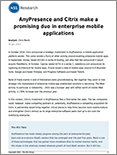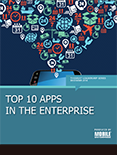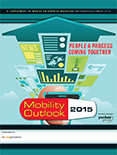
The Role of APIs in Digital Transformation
Organizations of all types and sizes are currently enamored with (or plagued) by a new IT buzzword: Digital Transformation. The cloud, mobile and social network era is indeed affecting the way organizations run their business. Big data and the Internet of Things (IoT) also have firms investing wildly to keep up, or scratching their heads trying to figure out what to do.

Platform Architecture Guide: Internet of Things (IoT) Application Development
The Internet of Things (IoT) represents a massive growth opportunity for businesses worldwide. Developers will be at the center of this opportunity, helping to craft IoT solutions across both industrial and consumer use cases. This report explores a reference architecture for IoT solutions. .

What to Consider When Selecting a Platform for IoT App Development
IoT platforms are now entering their adolescence, and the vendor landscape is starting to settle with certain well-defined segments emerging. There are several layers to an IoT platform stack, and corresponding solutions in each, which can help businesses build innovative IoT solutions more efficiently.

Top 10 Characteristics of Enterprise Backend Services (BaaS/MBaaS)
If you search the web for “MBaaS” you’re likely to get over 200,000 results. If you search for “mobile backend as a service” you’re likely to get over 4 million results. If you read through the first few pages of either set of search results, you’ll see that most of them refer to a dozen or so MBaaS solutions. How do you differentiate those solutions, and decide which ones are worth evaluating for your enterprise?

AnyPresence and Citrix make a promising duo in enterprise mobile applications
In October 2014, Citrix announced a strategic investment in AnyPresence, a mobile-application platform vendor. This came amidst a flurry of other activity around enabling enterprise mobile apps. In September, Kinvey raised $10.8m in series B funding, just after Red Hat announced it would acquire FeedHenry. In October, Capriza raised $27m in a series C, salesforce.com announced its Lightning architecture for mobile apps, Oracle issued a slew of mobile apps around its E-Business Suite, Google purchased Firebase, and Progress Software purchased Telerik.

Top 10 Apps in the Enterprise
How much has changed in mobile since Mobile Enterprise's 2011 app survey? Check out the latest data around what employees are using for work and what dramatic change is coming to the way we build apps.

Mobility Outlook 2015: People & Process Coming Together
The progression of mobility in the enterprise so far is akin to a child entering its early awkward teengage years, according to 451 Analyst Chris Marsh. How will this change in 2015? What trends need to go and what's coming? This exclusive report looks ahead and Marsh provides practical recommendations.